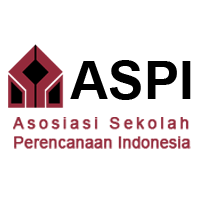STATUS EKOSISTEM PESISIR BAGI PERENCANAAN TATA RUANG WILAYAH PESISIR DI KAWASAN TELUK AMBON
DOI:
https://doi.org/10.29313/jpwk.v10i1.242Keywords:
coastal, ecosystem, spatial planning, damaged, land use planningAbstract
This study aims is to analyze the status of coastal ecosystems, to analyze factors that affect the quality of coastal ecosystems, and to prepare the direction on spatial planning in coastal areas of Ambon Bay Area.
The analytical method used in this study is the analysis of ecosystem status, principal components analysis, analysis GIS and analysis of dynamic systems.
The results showed that the condition of ecosystem status damaged in 2008, whereby, the status of mangrove ecosystems is moderate with a density of 1100 trees/ha, the status of seagrass ecosystems damaged by percentage cover of 38,76%, and the status of coral reef ecosystems are damaged by the percentage of live coral is 42,27%
By using dynamic systems analysis, created the scenario of land use planning in Ambon Bay Area that integrates land and wet land. The scenario used in this study is the optimistic, pessimistic and moderate scenarios. The variable that is used to determine of policy scenarios spatial planning based on the rate of population growth is 2,5% per annum, while variable forest area of at least 30% of the area. Of the three scenarios, the scenario chosen for the land use planning policy in Ambon Bay Areas in the future is to use the moderate scenario. The simulation results moderate scenario, the status of coastal ecosystems is improved from the criteria of the coastal ecosystem damaged by coastal ecosystems index 44,44% in 2008 turned into good condition with the index of coastal ecosystems 88,89% in 2029















